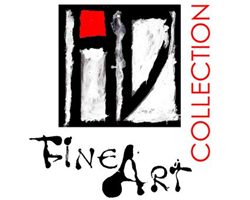Product Description
Otis Oldfield “Water Pipes and Shadows” Oil on Canvas c. 1920


OTIS OLDFIELD (1890-1969) USA
“Water pipes and shadows” c. 1920
Oil on canvas, walnut frame
Signed: Otis Oldfield (lower left)
For more information see: Otis Oldfield 1890-1990, Centennial retrospective exhibition (San Francisco, CA: Inkwell Publishing, 1990).
Painting: H: 16 1/8” x W: 13”
Framed: H: 28 ¼” x W: 25 1/8”
Price: $42,500
***The Metropolitan Museum of Art in New York owns a famous Gelatin silver print photograph by Morton Schamberg from 1916 entitled “God”. This image is akin to Duchamp’s “Fountain” and is an iconic Dadaist assemblage of plumbing pipes mounted on a miter box. The “Water Pipes and Shadows” painting by Otis Oldfield similarly brings a certain animation and personality to an under sink composition of mundane drain pipes in a sophisticated “Rayonist” or “Cubist” stylization. Otis Oldfield was born in Sacramento, California in 1890. He enrolled in the Best Art School in San Francisco in 1909 and continued his studies at the Academie Julian in Paris. Returning to the U.S., Oldfield settled briefly Sacramento before returning to San Francisco to accept a post as a teacher at the California School of Fine Art. Oldfield developed a bold modernist style, which caused some controversy among critics covering his exhibits. In 1936 Oldfield was one of a group of San Francisco artists chosen for a WPA project to paint murals in San Francisco’s Coit Tower. Following WW II, Oldfield taught at the California College of Arts and Crafts in Oakland. He died in San Francisco in 1969.
Otis Oldfield “Water Pipes and Shadows” Oil on Canvas c. 1920
You must be logged in to post a comment.
OSCAR B. ERICKSON (1883 – 1970) American
Early Morning Rockport c. 1940
Oil on canvas
Marks: Original exhibition label verso: THE NORTHWEST ART LEAGUE,
INC., Oscar B. Erickson, Early Morning Rockport, oil
For brief bibliographical listing see: Who Was Who in American Art,
(Madison, Conn.: Sound View Press, 1985), p. 189.
Canvas (sight): H: 21” x W: 23”
Frame: H: 26 1/2” x W: 28 1/2”
Oscar Erickson was born in Milwaukee, Wisconsin. He studied painting and printmaking at the Milwaukee Art League and later at the Herron Art Institute of Chicago. He exhibited at the Chicago Academy of the Fine Arts, the Hoosier Salon from 1927 to 1942, the Illinois State Museum, and the Norwegian Club.
GERRIT V. SINCLAIR (1890-1955) USA
Third Ward Milwaukee c. 1940
Oil on board, lemon gold frame
Signed: GV Sinclair (lower right corner on front of painting)
For more information see: Who Was Who in American Art (Madison, Conn.: Sound View Press, 1985) p. 571.
Painting H: 15” x W: 20”
Framed H: 20 7/16” x W: 25 7/16”
Price: $27,500
Gerrit V. Sinclair was born in Grand Haven, Michigan in 1890. He studied art at the School of the Art Institute of Chicago from 1910 to 1915. His most well known teachers at the Art Institute were John Vanderpoel and John Norton. In 1917 the artist enlisted in the Army Ambulance Corps and served in northern Italy and Austria. Scenes from his experience abroad are recorded in his works of the early 1920s. Following the war, Sinclair settled in Milwaukee, Wisconsin, where he became a member of the faculty of the Layton School of Art upon the school’s founding in 1920. He continued to teach at the Layton School and at the Oxbow Summer School of Art in Saugatuck, Michigan until his retirement in 1954. Sinclair is recognized both as an important artist and teacher from the Great Lakes region. During his lifetime Sinclair’s paintings were exhibited at the Salon d’Automne in Paris, the Salon Printemps in Paris, the Pennsylvania Academy of Fine Arts, the National Academy of Design, the Whitney Museum in New York, the New York Watercolor Club, the Brooklyn Museum, the Corcoran Gallery of Art in Washington D.C., the Carnegie Institute in Pittsburgh, the Art Institute of Chicago and in many other museums and galleries. He received numerous prizes and commissions for his work including a W.P.A. mural commission for the Federal Building in Wassau, Wisconsin. Sinclair was a member of Wisconsin Painters & Sculptors, Wisconsin Federation of the Arts and the Wisconsin Painting Museum. His style is a blend of realism and Impressionism but is clearly modern in its abstract concern for composition and color. Sinclair is best known for his regionalist paintings of rural and urban Wisconsin. His farm scene entitled ”Spring in Wisconsin” was exhibited at the 1939 World’s Fair in New York. Gerrit V. Sinclair died in Milwaukee, Wisconsin in 1955.

Reviews
There are no reviews yet, would you like to submit yours?